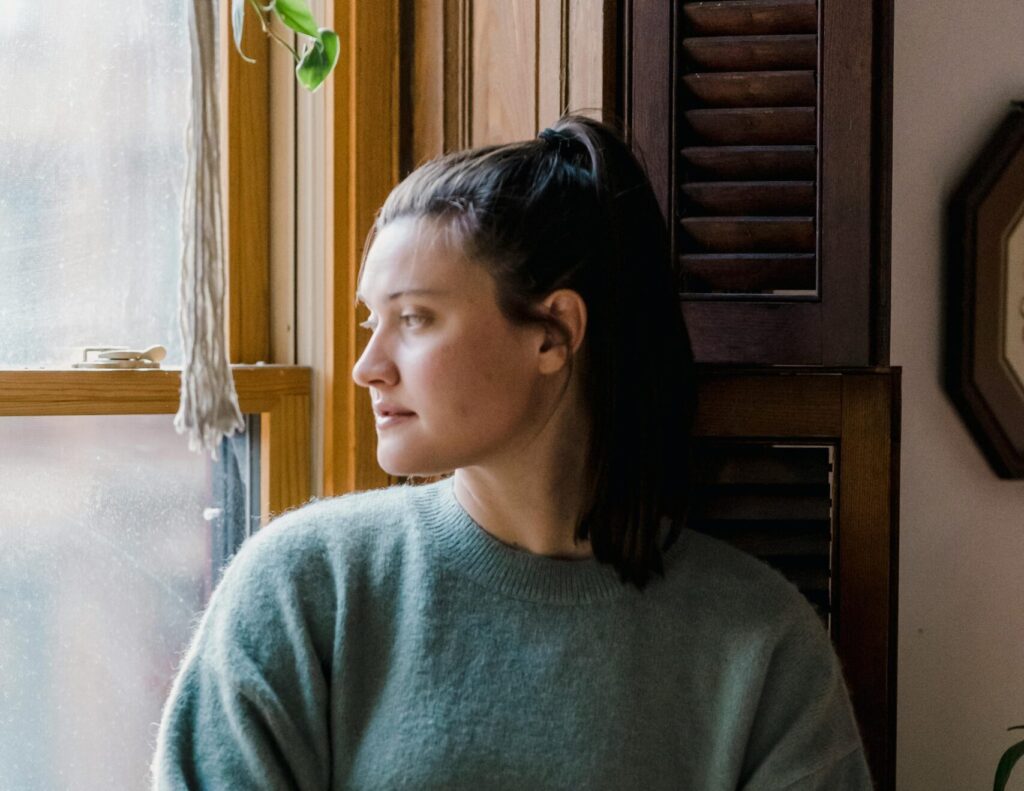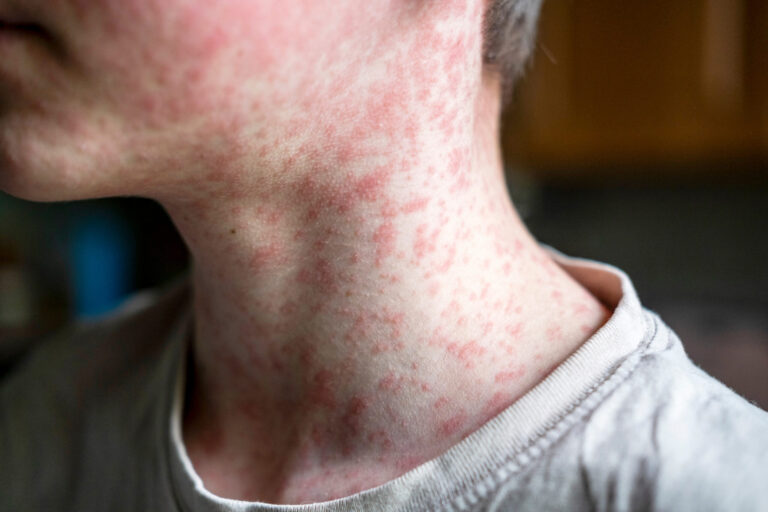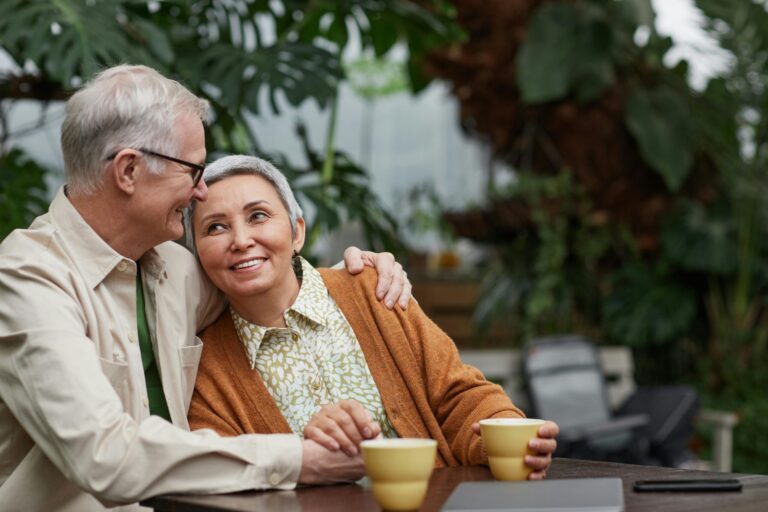What is anxiety?
Anxiety is an emotion that enables a person to confront a threat by fleeing, fighting or freezing. Therefore, it plays a protective and useful role and is relatively short-term. The person returns to a normal state once the threat has passed. In the case of pathological anxiety, this emotion is described as disproportionate, unpleasant, and combines anxious thoughts (anticipations, beliefs, worries, doubts, fears), physical symptoms (rapid and strong heartbeat, tremors, difficulty breathing, sweating, clammy hands, tense muscles), and behavioral symptoms (avoidance). This causes distress in the individual and difficulties in functioning.
The different types of anxiety disorders
There are different types of anxiety disorders that distinguish themselves based on what triggers anxiety, its intensity, and duration.
Social Anxiety Disorder
In the case of social anxiety disorder, anxiety is triggered by social situations, for example:
- during social interactions (conversation, meetings);
- when performing in front of others (public speaking);
- when being observed (eating, writing in front of others).
Social Anxiety Disorder is the most common anxiety disorder in the population, with a prevalence rate around 7%.
This disorder affects women twice as much as men. The typical age of onset for symptoms is around 13 years (8-15).
Panic Disorder
In the case of panic disorder, anxiety occurs without an identifiable trigger and reaches its peak within a few minutes. The person may believe they are having a heart attack or about to faint. The episode typically subsides in less than an hour, leaving a feeling of fatigue and exhaustion. The person fears the occurrence of unpredictable future episodes and begins to avoid various situations. This leads to a fear of experiencing fear itself. Panic disorder is distinct from a panic attack, which can occur in the context of other disorders (such as social anxiety disorder, post-traumatic stress disorder, depressive disorder, etc.). Over 30% of the population has experienced a panic attack at some point, whereas about 2-3% of the population live with panic disorder. This disorder predominantly affects women, although its incidence among men is increasing. The typical age of onset for this disorder is between 20-24 years old.
Agoraphobia
Agoraphobia is sometimes accompanied by panic disorder, and when it manifests, symptoms typically appear within a year following the onset of panic attacks. A person with agoraphobia experiences marked fear or anxiety concerning, for example, the use of public transportation, open spaces (parking lots, supermarkets, bridges), enclosed spaces (theater, cinema, etc.), leaving home alone, being in a crowd, or waiting in line. Often, this fear is linked to concerns about not being able to escape easily or find help in the event of a panic attack or other embarrassing symptoms. The median age of onset is 17 years, and around 25-29 years if not associated with panic disorder or panic attacks.
Generalized Anxiety Disorder
In the case of Generalized Anxiety Disorder (GAD), anxiety is almost always present and involves multiple usually minor concerns. The person worries about everything: the future, their health, their relationships, their finances, etc. This worry is perceived as disproportionate and consumes a significant amount of time during the day, affecting the person’s ability to function. It is often referred to as intolerance of uncertainty.
This disorder affects between 5 to 10% of the population and is twice as common in women as in men. Its frequency increases with age, with an onset typically around 31 years old (range 20-47).
Phobia
In the case of specific phobia, anxiety is triggered by contact with the feared object or situation, such as animals, blood, or injections. This may follow a traumatic event (experienced or observed), the transmission of information, or a panic attack in the feared situation.
The prevalence of phobia in children is 5%, 16% in adolescents aged 13-17, and 3-5% in adults. It affects women more often (ratio 2:1) and typically develops between 7 and 11 years old.
It is common for individuals with an anxiety disorder to also have a comorbid condition, often another anxiety disorder, depressive disorder, or a substance use disorder. Additionally, certain medical conditions may underlie some anxiety or somatic symptoms, highlighting the importance of thorough medical evaluation.
The onset of anxiety disorder at a later age, especially in individuals with few or no personal history of anxiety, could be indicative of an underlying medical issue. Mild neurocognitive disorder or even dementia can initially present with increased anxiety. In women, the perimenopausal and menopausal periods are often accompanied by symptoms of anxiety.
What it is not?
- Feeling nervous during stressful events such as an exam, a job interview, a public presentation, a sports competition, etc., or during significant life changes such as marriage, divorce, or the birth of a child.
- Being embarrassed or shy in certain contexts. In these cases, anxiety is related to specific events and typically dissipates when the concerning situation returns to normal.
What are the treatments?
Psychotherapy
Psychotherapy first aims to understand anxiety, predisposing and precipitating factors, as well as maintenance factors (avoidance, safety behaviors). It helps the person better understand how anxiety manifests in their life and teaches techniques to manage it. It assists in changing thinking patterns and can help the person gradually resume activities they have avoided. Psychotherapy can also help identify the meaning the person assigns to life events and assist in developing personal resources, values, and needs, or reconnecting with them.
Medication
Anxiety disorders can be treated with medication (typically antidepressants are considered first-line treatment), psychotherapy, or a combination of both. Medication reduces the intensity and frequency of symptoms, thereby relieving the individual. Additionally, medication may sometimes be necessary to enable the individual to benefit from psychotherapeutic approaches.
Some suggestions:
➔ Avoid stimulants (coffee, tea, sodas, chocolate, energy drinks, etc.) and substances (alcohol and drugs).
➔ Ensure you have a good diet and get restful sleep. Fatigue does not help to recover.
➔ Try to confront your fears. Avoiding situations that trigger anxiety can worsen it.
➔ Stay active and exercise at least three times a week for about 30 minutes each time.
➔ Learn breathing control. For example, practice “square breathing” several times a day for a few minutes: Inhale for four seconds, hold the breath for four seconds, exhale slowly for four seconds, and hold the lungs empty for four seconds before repeating.
➔ Don’t wait until you are unable to perform your usual activities before seeking professional health advice.
Would you like to consult a professional about this?
To learn more about our mental health and well-being services, please speak with your doctor or a member of your care team.
*The information in this sheet does not replace the advice of a healthcare professional and is provided for informational purposes only.



